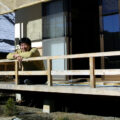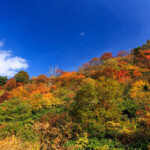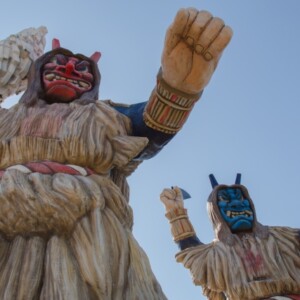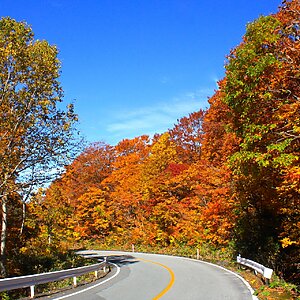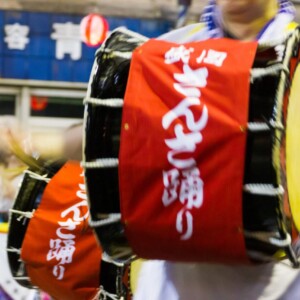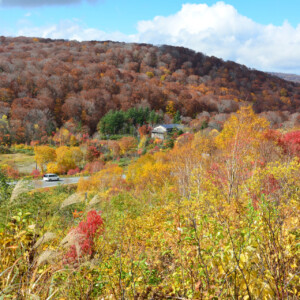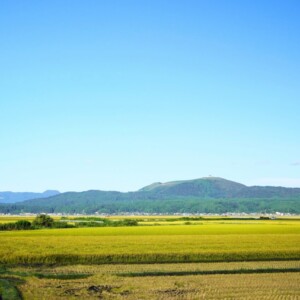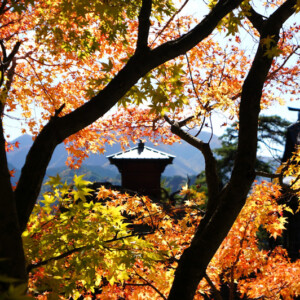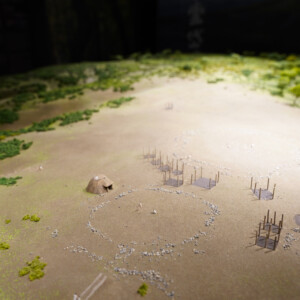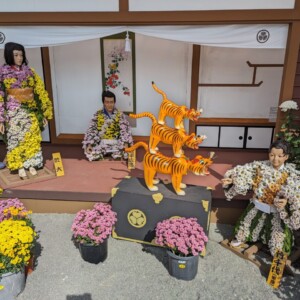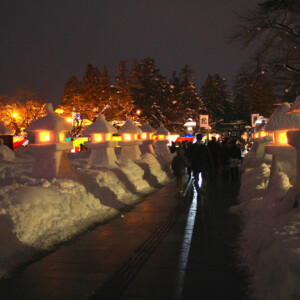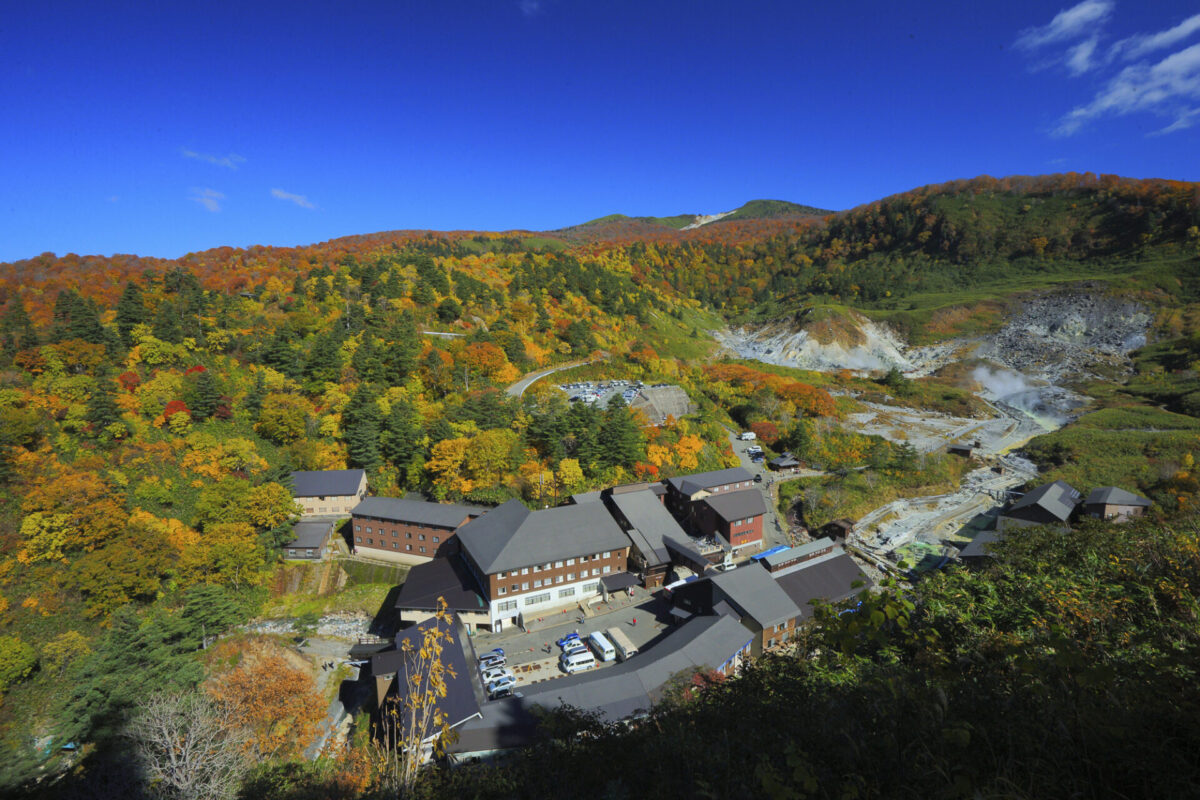
玉川温泉・田沢湖周辺の秋を満喫できる紅葉スポットはここだ!
目次
田沢湖は日本一水深が深い湖(最深部約423.4m)で、四季折々にさまざまな顔を見せてくれます。特に紅葉の季節は格別で、赤、黄などに彩られた森と湖の透明度の高い湖水のコントラストは見事です。

1周約20kmの湖岸には遊歩道が設けられており、「田沢湖レストハウス」を起点にしたハイキングがおすすめです。途中には、休憩所やトイレ、茶屋などもあり、安全安心な散策路になっています。レンタサイクルも田沢湖畔にあり、湖1周約1時間30分。こちらも気分爽快です。
田沢湖 Information
- 施設名称:田沢湖レストハウス
- 所在地:秋田県仙北市田沢湖田沢字春山148
- 問い合わせ先:田沢湖レストハウス
- 電話番号:0187-43-0274
- 営業時間:
- 売店/8:30~17:00
- レストラン/11:00~15:00
- 遊覧船/運航日、時刻等は季節・繁忙期などにより変動(要問い合わせ)
- ※遊覧船はたつこ像のある潟尻港での乗降を桟橋不備のため中止しています(要問い合わせ)
- 休業日:売店・レストラン・遊覧船とも年中無休
- URL:田沢湖レストハウス
- アクセス:
- 公共交通機関/秋田新幹線・JR田沢湖線田沢湖駅から路線バスで約12分、秋田空港から車で約90分
- 車/東北自動車道盛岡ICから約50分
Google Map
日本一の強酸性温泉、玉川温泉ベストシーズンは紅葉シーズン

強烈な酸性泉で有名な「玉川温泉」および「新玉川温泉」はおのおの1軒宿で、田沢湖から北へ約30km、八幡平(はちまんたい/標高約1,613m)の中腹を抜け、秋田県北東部の鹿角市(かづのし)まで伸びる国道341号沿い、標高約760mの高原地帯にあります。
玉川温泉の泉源[大噴(おおぶけ)]の酸性度を表すpH(ペーハー)は1.2(公式数値)。pHは7が中性で数値が増えればアルカリ性、減れば酸性ですが、pH1.2はたとえると胃酸の値だそうです。分かりやすいのはレモン汁でpH2~3です。

[大噴]は1つの泉源から毎分約9,000リットルの湯が噴出しています。これもまた日本一です。湯口での泉温は約98℃で、玉川温泉にある温泉宿「玉川温泉」「新玉川温泉」とも同じ源泉を掛け流しで使用しています。正式な泉質は[酸性・含二酸化炭素・鉄(Ⅱ)-アルミニウム-硫酸塩・塩化物泉]といって、主成分は塩酸。塩酸は火山ガスに由来する成分です。温泉成分にはほかにも硫酸やラジウムなどが含まれています。火山性の温泉に多い硫化水素臭がほとんどしないという、この地域だけしかない泉質です。
偉大な力を持つ火山から生まれた温泉
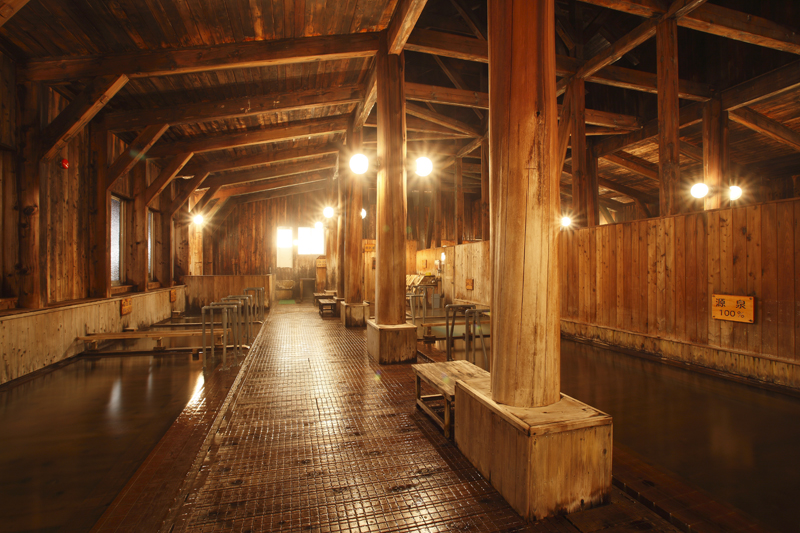
玉川温泉は、平安時代が始まった806年頃に東にそびえる秋田焼山(あきたやけやま/標高約1,366m/常時観測火山)が噴火した際に現れたようです。温泉として使われ始めたのは江戸時代初期(1680年頃)といわれています。
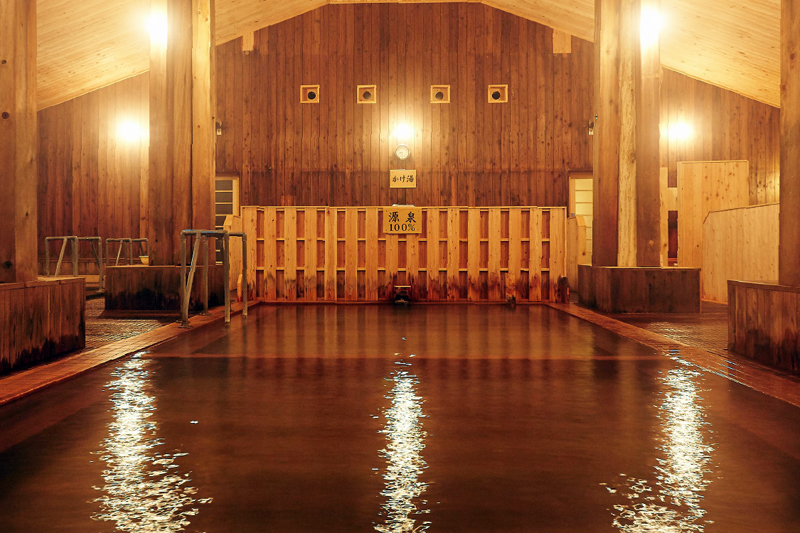
玉川温泉の強酸性温泉は人の肌にもさまざまな影響を及ぼします。はじめて源泉風呂に入浴するとピリピリしたり、傷や粘膜部分には痛みも感じたりします。肌の弱い人では水ぶくれになってしまうこともあるようです。しかし、殺菌力は非常に強く、アトピー性皮膚炎やニキビなどの皮膚病には治癒効果があることが知られています。
皮膚疾患や高血圧、糖尿病、病後回復、痛みの回復などさまざまな効能
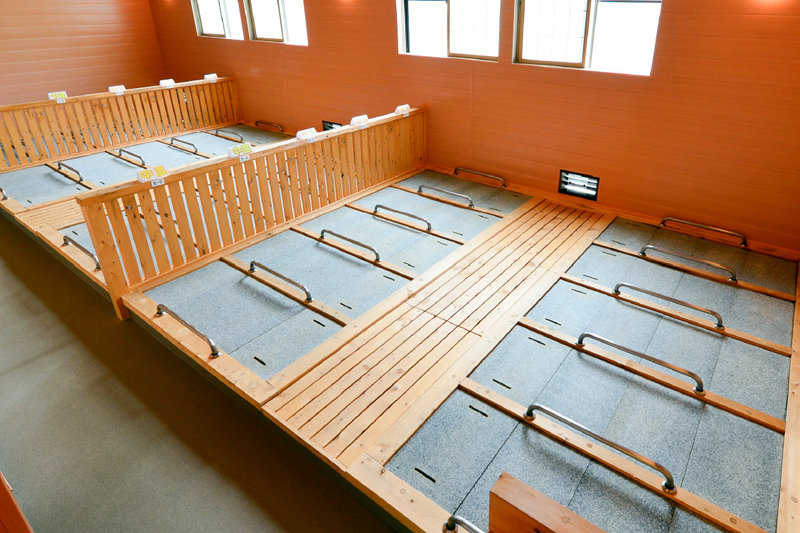
玉川温泉の効能は、入浴では皮膚疾患のほか、ラジウムを含むことによる病気自然治癒力の促進、含有成分によるリウマチを含む神経系統の痛みの改善、関節や固くなった筋肉の動き、血液循環、高血圧、糖尿病、内臓機能低下、貧血などの改善、健康増進、疲労回復などが多くの適応症があることが知られています。
飲泉も、源泉を38倍に薄めて利用という条件付きで可能です。その効能は、胃腸の疾患、肝臓機能低下、糖尿病などに効果があるとされています。蒸気吸入はぜんそく、気管支炎などの改善が期待されます。
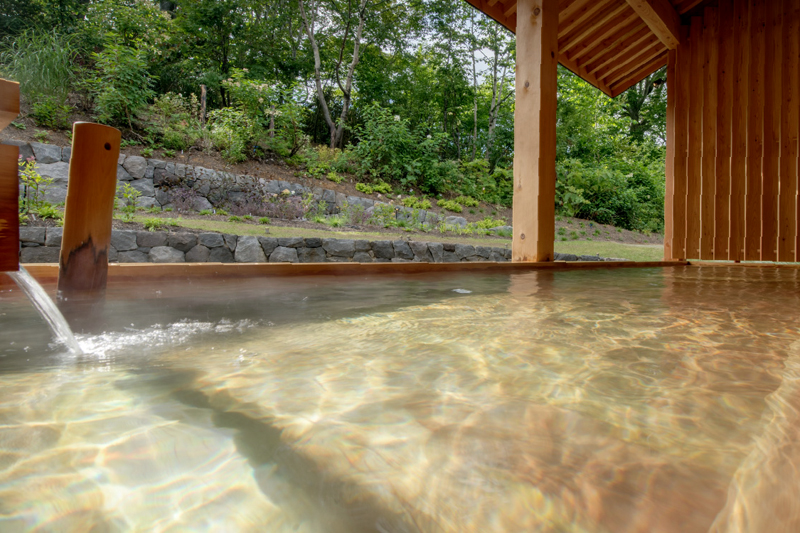
玉川温泉の風呂は、多くの人が効果を実感できるようにさまざまに配慮
温泉宿「玉川温泉」「新玉川温泉」では、泉源から引いた温泉をそのまま使用した源泉100%の湯船のほか、源泉率50%の湯船、50%の[ぬる湯]、源泉100%の[箱蒸し湯]、室内岩盤浴など源泉率の違うさまざまな温泉が揃えられています。「新玉川温泉」には源泉率30%の[露天風呂]もあり、日帰り入浴はどちらもOKです。「玉川温泉」は冬季期間休業ですが、「新玉川温泉」は通年営業しています。
玉川温泉 Information
- 施設名称:効能溢れる癒しの湯治宿「玉川温泉」
- 所在地:秋田県仙北市田沢湖玉川渋黒沢
- 問い合わせ先:玉川温泉予約センター
- 電話番号:0187-58-3000
- 営業期間:4月下旬~10月下旬(冬季休業)
- 携帯電話:通話可(NTTdocomoのみ)
- Wi-Fi:フリー
- 宿泊料金・施設詳細は「玉川温泉」ホームページか旅行予約サイトで確認
- 温泉:
- 泉質/酸性・含二酸化炭素・鉄(Ⅱ)-アルミニウム-硫酸塩・塩化物泉
- 湯温/98℃([大噴]源泉湯口)
- 効能/本文参照
- URL:効能溢れる癒やしの湯治宿「玉川温泉」
- アクセス:
- 公共交通機関/東北新幹線・JR田沢湖線田沢湖駅から路線バスまたは車で約1時間15分。秋田空港から玉川温泉行きエアポートライナーで約2時間40分
- 車/東北自動車道松尾八幡平ICからアスピーテライン・国道341号線経由約1時間30分
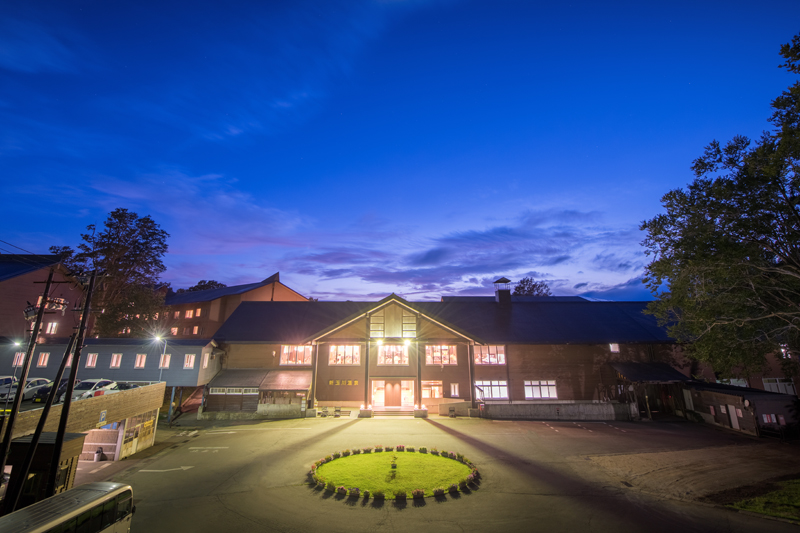
日本の山岳温泉リゾート「新玉川温泉」 Information
- 施設名称:日本の山岳温泉リゾート「新玉川温泉」
- 所在地:秋田県仙北市田沢湖玉川
- 問い合わせ先:玉川温泉予約センター
- 電話番号:0187-58-3000
- 営業期間:通年
- 携帯電話:通話可(NTTdocomoのみ)
- Wi-Fi:フリー
- 宿泊料金・施設詳細は「新玉川温泉」ホームページか旅行予約サイトで確認
- 温泉:
- 泉質/酸性・含二酸化炭素・鉄(Ⅱ)-アルミニウム-硫酸塩・塩化物泉
- 湯温/98℃([大噴]源泉湯口)
- URL:日本の山岳温泉リゾート「新玉川温泉」
- アクセス:
- 公共交通機関/東北新幹線・JR田沢湖線田沢湖駅から路線バスまたは車で約1時間10分または秋田空港から玉川温泉行きエアポートライナーで約2時間40分
- 車/東北自動車道松尾八幡平ICからアスピーテライン・国道341号線経由約1時間25分(冬季は一般車両通行止めのため、路線バスのみの運行)
Google Map
[大噴]がある泉源地帯には「玉川温泉自然研究路」が設けられ、天然岩盤浴も可能

玉川温泉の主要泉源[大噴]は、旅館「玉川温泉」のすぐ隣にある地獄谷と呼ばれる湯煙がもうもうとあがる源泉部の中にあります。源泉部分には[大噴]をはじめ、無数の小さな温泉口があり、湯気とともに熱い温泉を噴き出す様は、地球が生きていることが実感できる光景です。
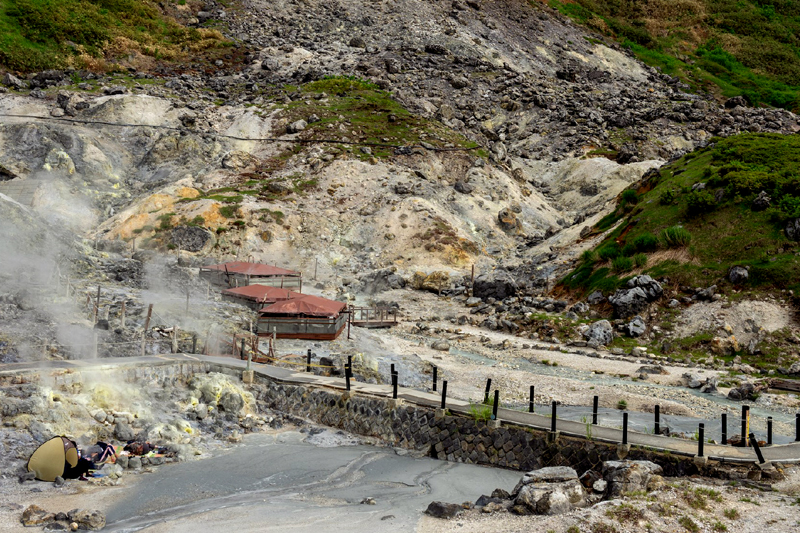
源泉部の岩肌は、温泉によって全体的に温められています。その岩の上に寝転ぶのが“天然岩盤浴”で、玉川温泉は岩盤浴発祥の地ともいわれています。自然探求路脇岩盤の一部に岩盤浴ができるエリアが確保されていて、申し込み不要で誰でも自由に利用できます。
ただし、岩盤は50℃にも達するところがあり、素肌はもちろん、洋服や浴衣のままでは危険です。必ず敷物を敷いてその上に横になるようにしましょう。さらに熱を逃がさないように、タオルケットや毛布を上にかけることが推奨されています。
低温やけど予防のため、時々寝返りし、40分程度で終了します。岩盤浴は無料ですが、敷物など岩盤浴に必要な用品や水などは用意されていません、すべて自前で用意しましょう。敷物はレジャーシートよりい草でできたゴザがいいようです。自然岩盤浴は、鎮痛効果や新陳代謝の促進が期待できます。
玉川温泉自然探求路 Information
- 施設名称:玉川温泉自然探求路
- 所在地:秋田県仙北市田沢湖玉川渋黒沢(効能溢れる癒しの湯治宿「玉川温泉」のとなり)
- 問い合わせ先:0187-43-2111
- 電話番号:仙北市田沢湖観光情報センター「フォレイク」
- 散策自由
- 自然岩盤浴:無料(申し込みも必要なし)
- ※亜硫酸ガスの濃度が高い立ち入り禁止エリアがあります。命に関わりますので絶対に立ち入らないでください
- ※冬季休業
- 地図:効能溢れる癒しの湯治宿「玉川温泉」参照
森の散策や体験施設、テント・バンガローエリアなどアウトドアライフを満喫できる「かたまえ山森林公園」
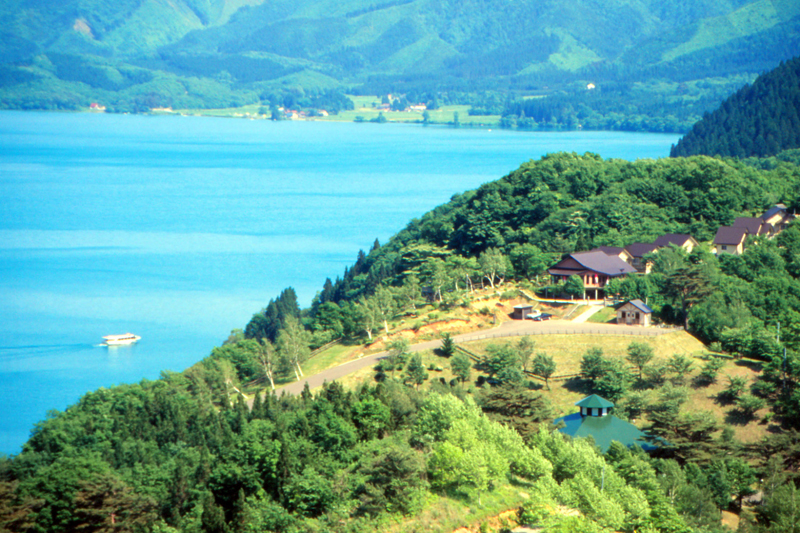
「かたまえ山森林公園」は、田沢湖の西岸に広がる森林公園で、湖岸には有名な金箔に覆われた[たつこ像]が立っています。[たつこ像]は、その昔永遠の美しさを望んだ辰子という娘が、願いがかなうという泉の水を飲み続けたため、いつしか龍と化してしまい、悲しんだ辰子は田沢湖に身を投じたという伝説から、1968年(昭和43年)に建てられました。像はブロンズ(青銅)で造られていますが、金箔が貼られているのは田沢湖の水が玉川温泉の影響で酸性度が高く、像がさびるのを防ぐためだそうです。

「かたまえ山森林公園」には、森の中を歩ける散策路があり、道沿いには[森林学習交流館]や展望台、炭焼き体験施設、遊具で遊べる広場などがあります。また、テントエリアやコテージエリアがありアウトドアライフが満喫できます。
(※2025年現在「田沢湖レストハウス」からの遊覧船は、「かたまえ山森林公園」近くの潟尻港では乗降できません。開通の見込みなどは「田沢湖レストハウス」に問い合わせてください)
かたまえ山森林公園 Information
- かたまえ山森林公園
- 施設名称:かたまえ山森林公園
- 所在地:秋田県仙北市西木町西明寺字潟尻
- 問い合わせ先:田沢湖キャンプ場
- 電話番号:0187-47-2007
- 携帯電話:圏内(NTTdocomo・au・SoftBank)
- Wi-Fi:なし
- ※キャンプ場料金、施設等の詳細は「かたまえ山森林公園」ホームページ参照
- ※クマの出没が多くなっています。鈴やホイッスル、クマ撃退スプレーなどを所持し、単独行動をしないなど十分に気をつけて行動してください。またスズメバチにも注意してください
- URL:かたまえ山森林公園
- アクセス:
- 公共交通機関/東北新幹線・JR田沢湖線田沢湖駅から路線バス「田沢湖一周線」で約30分、潟尻バス停で下車、徒歩約15分
- 車/東北自動車道森盛岡ICから国道46号線経由で約1時間15分
Google Map
晩秋の風物詩、黄色に染まる「真山寺の乳イチョウ」
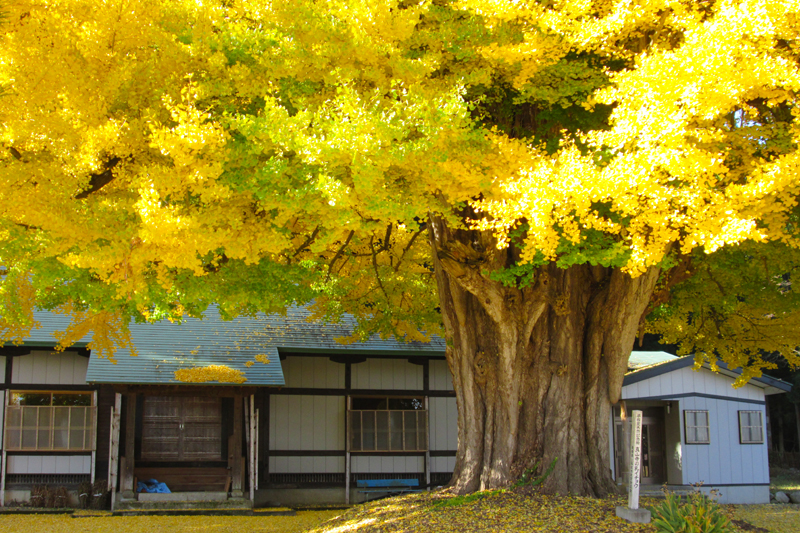
田沢湖の西側、仙北市西木町は、角館を最初に整備したことで知られる陸奥国(むつのくに)雫石(岩手県雫石町)の豪族戸沢氏が、はじめて秋田に進出し、城を築いたところです。また平賀源内(ひらがげんない/1728年~1779年)が教えたと伝わる行事[上桧木内の紙風船上げ(かみひのきないのふうせんあげ)](仙北市指定無形民俗文化財)でも知られています。そんな古い伝統を持つ西木の秋は「真山寺の乳イチョウ」がおすすめです。
「真山寺の乳イチョウ」は、角館から北へ約10km、田沢湖(たつこ像)からは西へ5km、1,200年前に弘法大師が創建したと伝わる古寺真山寺(しんざんじ)境内にある1本の大イチョウです。伝承では弘法大師が逆さまにさした杖に根が生えてイチョウになったといわれています。実際の樹齢は600年ほどで、樹高約43.1m、幹周りは根本で約 10.2mあります。
このイチョウを有名にしているのは、数十本ある幹から垂れ下がる“乳枝(にゅうし)”で、最大のものは長さ2m、直径は30㎝にも達します。枝から下がる形が乳房に似ていることから、昔から垂れ下がった乳枝に白い紙を結び、拝むと乳が出るといわれていました。でも、皮肉なことにこのイチョウは男木(イチョウは雌雄がある樹木)で、実(ギンナン)はなりません。秋田県指定天然記念物。
真山寺の乳イチョウ Information
- 施設名称:真山寺の乳イチョウ
- 所在地:秋田県仙北市西木町小山田石川原281
- 問い合わせ先:西木観光案内所
- 電話番号:0187-42-8480
- アクセス:
- 公共交通機関/秋田新幹線・JR田沢湖線角館駅乗り換え秋田内陸縦貫鉄道八津駅下車、徒歩約25分
- 車/東北自動車道盛岡ICから約1時間20分、「からくり館」または「桧木内川河川公園」の駐車場に車を置いて、徒歩約25分


